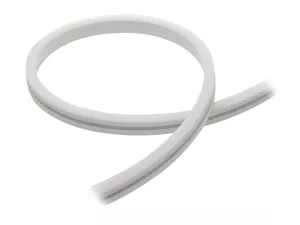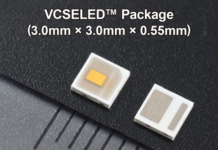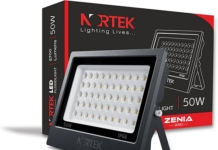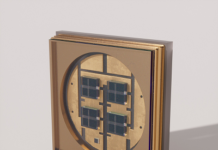
In the last decade, LED strips have gained great popularity in the field of household and outdoor lighting, interior design as well as industrial and workplace lighting. This technology is not homogenous, as it offers a variety of specialised solutions. However, the main features of all LED strips are their lifetime, energy efficiency and the ease of implementation in diverse applications. The TME catalogue offers a wide choice of these products, and our clients show continued interest in their capabilities. Below, we present a practical overview of TME’s products from the LED strips category, divided depending on their:
· manufacturers;
· colours;
· manufacturing technology;
· purpose.
Manufacturers of LED strips available from TME
The manufacturers whose portfolios we are going to focus are among the leading suppliers of LED lighting. These are specialised companies operating in the international markets. The first one is Asia-based WISVA Optoelectronics, which has been promoting LED light sources as an ergonomic and flexible alternative to traditional technologies for over 12 years. The second supplier is iPixel, a manufacturer from China whose main focus are neon and special effect LED strips, offering a full range of products with an excellent price-quality ratio. The third noteworthy brand is Ledxon, a German manufacturer with a vast portfolio and over 30 years of experience in the lighting industry. Its portfolio of products includes a variety of LED strips and is constantly expanded in terms of this segment of products, mostly for office and household lighting. Last, but not least, let us also list WorldSemi here, which is one of the undisputable leaders in manufacturing not only programmable electroluminescent diodes but also (or maybe most of all) LED RGB drivers that are in fact a worldwide standard in the field of special effect LED lighting.
Colours of LED strips
The most obvious method of dividing LED strips is grouping them according to the colour of the light they emit, or rather their colour capabilities.
The first group here includes LED strips emitting white light. Their basic parameter is the maximum power (per one metre of a strip) which, in the case of the products that are available from TME, ranges from 3W to 30W, which translates into brightness from the range of 80lm/m to 2912lm/m. To compare, a classic 60W lightbulb emits light with the intensity of approximately 800lm. Even such a simple comparison illustrates perfectly the power-related superiority of LED sources of lighting. We are talking here about the light produced by a strip powered by constant rated voltage. Thanks to a driver (a power supply) that has an adjustable voltage or that supplies power in the form of pulse-width modulation, the user can set the lighting intensity precisely and limit the energy consumption.
It should be emphasised that a segment of a “white” LED strip consists of a wide range of colour temperatures. A “warm” light, resembling a candle flame, is a temperature of 1800K. Neutral lighting (obtained in photography with the use of a flash) comes from sources with the colour characteristics of approx. 3500-4500K. The “coldest” among the LED strips available in the TME catalogue produce a white colour with the temperature of 10000K, comparable to the colour scheme of a cloudy day (white surfaces become light blue). In some models of LED strips, the colour
temperatures can be regulated (within the range indicated by the manufacturer), thanks to which they can be adjusted to the time of the day or to the individual preferences of the user.
The second type of strips offered by TME is based on LED diodes producing light of one strictly specified wavelength, i.e. single-colour diodes. The TME catalogue offers products emitting red, purple, blue, pink, green, golden and yellow colours. They are an excellent choice when it comes to interior design, advertising, signboards etc., because obtaining the colour effect does not require the use of any special controllers, which translates into the simplicity and energy efficiency of the mounting process.
The last type of lighting in our offer are RGB LED strips, which have been gaining great popularity recently. Their colours can be modified by changing the intensity of the red, green and blue components. Depending on the selected model, the user chooses the lighting colour along the entire length of the strip, on a section consisting of 3 RGB diodes or for each RGB LED separately (programmable strips). What is more, the TME catalogue also offers RGBW products where each model is additionally equipped with a white LED. This means that a series of electroluminescent diodes may act as standard lighting or, if needed, it can be used to produce multicolour light effects. Such products are a perfect solution in places that require a flexible arrangement, e.g. shop windows or museums, but they are used mostly in entertainment locations or household interiors.
LED strip structure
The manufacturing technology is an important factor that determines the possible various applications of LED strips. Below, we present three methods of creating these lighting sources as well as the basic features of each type.
Classic LED strips

A LED strip is clearly marked in places where it can be divided into sections.
A typical LED strip is a series of circuits produced with the use of a surface-mount technology on a flexible surface. These products are designed in a way that enables powering the chain by connecting one of its ends (or two ends, in the case of longer strips), dividing it into sections that are a multiple of a single module, and facilitates the mounting of a strip (e.g. by applying glue to the back surface). In some cases, the electronic components are protected from environmental factors by covering the light-emitting side with a transparent material or by placing the strip in a protective coat, which gives the products a high IP rating (IP65 or even IP67).
The strips come in many different widths (in the TME offer: from 3.5 to 20mm), and the most common components are 8-, 10- and 12-millimetre long. Their key feature is the density of the light-emitting components. The traditional technology allows to mount up to 700 LEDs per one metre. In this case, the strip may be divided into (and, for that matter, also shortened by) very short sections.
These products are often mounted in dedicated recesses in furniture and walls, where they act as a subtle but effective source of the main or additional lighting. Placing a strip near a light-coloured surface allows to obtain, thanks to light reflection, a low-cost, evenly diffused and pleasant lighting at home, workplace or a public utility facilities. Classic LED strips are also used as illuminating components (advertisement displays) to create warning signals as well as to provide an additional lighting source for switchboards in industrial installation boxes etc.
COB strips
COB, which stands for chip-on-board, is a method of mounting LEDs directly on the board (in the circuit) without placing it in the SMD case before that. The LED structures are densely distributed on the surface of the strip and covered with fluorescent phosphorus. The LED structures emit blue light that stimulates phosphorus to produce white light with the entire volume. Thanks to that, the undesirable contrast between lighter spots and darker sections is eliminated.
Such strips are slightly more expensive, however, they have a series of strong points: they produce homogenous lighting along the entire length of a strip (eliminating the need for additional diffusion; they emit light at a wide angle (180° instead of 120° which is typical for classic strips). Due to those advantages, they are used for contour or emergency lighting and in designer products. They are also popular in the architectural lighting, where they are used to highlight the shape of a building.

”Neon LED” strips

Unlike the models described above, the “neon” products can be tightly bent around the axis that is parallel to the light beam angle. Due to that, they can be used to create curved lines resembling classic neon lights. The strips are potted in a flexible plastic material, which not only allows to create an illusion of a homogenous light line but also makes the electronic circuit resistant to environmental factors (which is why such strips can be used outdoors). They come in different widths and colours and have a low energy consumption. Due to their properties, Neon LED strips are widely used to create advertisements in public space, such as signboards or logotypes. The TME catalogue offers a programmable version of these products, thanks to which users can create attractive, multicolour and animated signs.
LED strips in practice
Finally, let’s have a look at the division of LED strips according to their intended purpose. Due to their diversity, these light sources are used in almost every lighting-related field. While choosing the right product, the users should take into consideration their needs and focus on the intensity, colour as well as electrical and mechanical restrictions of particular items.
Lighting for home and office
In fact, each type of LED strips can be used as a lighting source for homes or workplaces. However, the most popular choice here are products emitting white light. There are many lighting-related items available on the market that use LED strips, such as LED fluorescent tubes and many types of lamps (e.g. ring, working or designer lamps). Another popular solution is installing them as a component of furniture or mirror frames and as obstruction light (e.g. on the edges of stairs) etc.
There are a few advantages in favour of using LED strips as the main lighting source in households and workplaces. Most of all, they are energy-efficient: modern strips equipped with a proper power supply (driver) can significantly reduce your electricity bills, particularly when it comes to spacious rooms. Another advantage is the fact that they can be recess-mounted and provide diffused, more natural lighting, at the same time eliminating bright, glaring spots. The intensity of the lighting based on LEDs can be easily modified, while the light intensity remains stable, which is particularly desirable when it comes to conference halls, classrooms etc. Using the RGBW strips or even a combination of white and RGBS strips, you can create an advanced lighting system that can be arranged in any way you like.

Due to the high-intensity LEDs, LED strips may replace lightbulbs.
In the industry
When it comes to industrial purposes, the main brand that should be recommended here is Lexdon. They offer bright, efficient strips with densely distributed LEDs which allows them to evenly illuminate interiors and reduce shadows. They can be used as a lighting source for both halls or warehouses and in smaller places, such as control cabinets or machines. They come in RGB and coloured versions, so they can be used as signal lights or warning lighting (e.g. to inform that a device is currently working or to mark a dangerous zone). Depending on the model, they are powered by 12V or 24V.
9009046
The high intensity was obtained by placing LEDs in two rows.
Special effect strips

Finally, we have to mention one of the key advantages of LED strips, which is the fact that they can create special effect lighting systems. The capabilities of the programmable RGB solutions or “Neon” lines allow to easily create eye-catching advertisements or signboards as well as to provide cosy lighting in clubs, restaurants, cinema rooms and many different interiors, including households. The possibility to dynamically change the colour and intensity of the lighting means that it can be synchronised with the image displayed on the screen or with music or even interactively react to movement or other parameters of the environment. Due to that, multicolour LED strips are popular not only with homeowners, but also with interior designers, architects and artists.
Text prepared by Transfer Multisort Elektronik Sp. z o.o


















